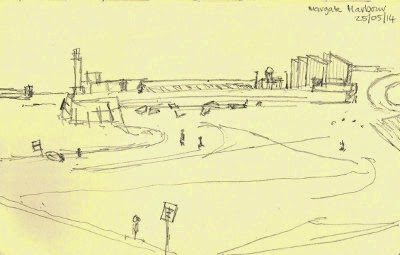Emily Carr is one of Canada's best loved artists but she was unknown outside north America, until now, because there is currently a major exhibition of her work on display at Dulwich Picture Gallery. She was born in 1871 in Victoria, Vancouver Island to well-to-do English parents. Whereas most artists I know benefit from around four years training or six if you do a Master's degree, Emily was able to spend three years studying art in San Francisco followed by five years in the UK, firstly at the Westminster School of Art and then in St Ives. She then succumbed to a mysterious illness which was diagnosed as 'hysteria'. According to Wikipedia hysteria described 'unmanageable emotional excesses' but we can only guess how Emily's illness manifested itself. This in turn led her to being admitted to a sanatorium in East Anglia for 18 months so by the time she was 30 she'd led a pretty adventurous life.
In 1907 she took a trip with her sister Alice up the west coast of British Columbia to Alaska. This was a pivotal moment in her art career because this was when she first encountered the totems and villages of indigenous peoples (today known as First Nations) and she decided she would make it her business to record their lives and artefacts in situ as she believed that their culture was doomed to disappear. To this end she endured rigorous journeys and battled with the elements so she could visit and record deserted villages she found along the way.
Then in around 1910 she felt she needed to develop her artistic skills even further so she set off for Paris where she encountered and learned from les Fauves (French for 'the wild beasts') and post-impressionist painters. With all this knowledge under her belt she exhibited, in 1913, dozens of views of First Nations' villages in her new post-impressionist style which went down like a lead balloon and she failed to attract buyers.
At this point, feeling discouraged, she pretty much quit painting and became a landlady. This is when my heart went out to her - what a state of affairs after all that work. Fourteen years later she got to know Lawren Harris a prominent member of the Group of Seven artists who encouraged Emily and she began exploring her native landscape with its rainforests and magnificent trees. You can see many of these vibrant, lively paintings of trees in this exhibition and I defy you not to feel enlivened by the time you reach the end. I would love to have illustrated this post with an example of her work but I don't want to contravene copyright so I offer you one of my own since Emily and I have a love of trees in common.
The exhibition is on until 8 March 2015
 |
| Vermezo Park, Buda ©Heather James 2014 |

















































